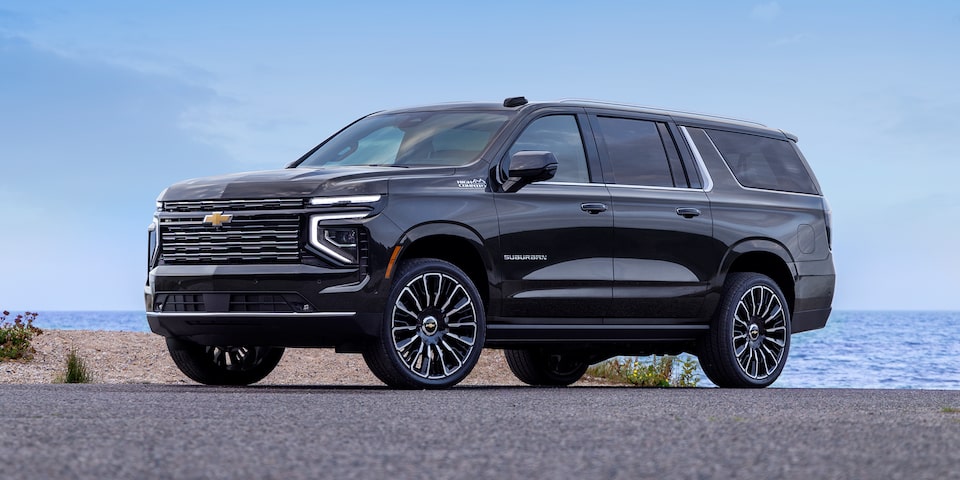Aytyapi Insights
Exploring the latest trends and updates in technology and lifestyle.
How SUVs Became the New Minivan
Discover why SUVs are the ultimate family vehicle, outshining minivans in style, space, and versatility. Buckle up for a new era of driving!
The Evolution of Family Vehicles: From Minivans to SUVs
The landscape of family vehicles has undergone a remarkable transformation over the past few decades, shifting from the classic minivan to the ever-popular SUV. In the 1980s and 1990s, minivans like the Chrysler Town & Country and the Honda Odyssey became the go-to choice for families due to their spacious interiors and practical features. These vehicles offered ample room for children, their gear, and even a few friends. Additionally, with sliding doors and a low step-in height, they made it easy for families to load and unload without much hassle. However, as consumer preferences evolved, minivans began to falter in the market, paving the way for a new era of family transportation.
As the 2000s rolled in, the SUV emerged as the frontrunner in family vehicle options, driven by a combination of factors such as increased awareness of safety, versatility, and a shift towards a more rugged, adventurous lifestyle. Unlike minivans, SUVs like the Toyota Highlander and Ford Explorer offered higher ground clearance and all-wheel-drive options, making them appealing for both urban and off-road adventures. Families were drawn to the spacious interiors, cargo capacity, and the ability to handle various terrains. Ultimately, this shift highlights not only the changing dynamics of family needs but also how automakers have adapted to keep up with consumer demands for flexibility and functionality in family vehicles.

Why SUVs Are the Modern Family's Vehicle of Choice
In today's fast-paced world, SUVs have emerged as the modern family's vehicle of choice for a multitude of reasons. One of the most significant advantages is their spaciousness, offering ample room for both passengers and cargo. With the ability to comfortably accommodate a family of four or more, as well as important gear for weekend adventures, SUVs provide a versatile solution for active families. They also often feature advanced safety technology, which is a top priority for parents. According to statistics, families that drive SUVs report feeling more secure due to their height and sturdiness compared to smaller vehicles.
Moreover, the versatility of SUVs extends beyond just space and safety. Many modern SUVs are designed with fuel efficiency in mind, making them economically viable for daily commutes and long road trips alike. The availability of hybrid and electric SUV models has further broadened their appeal, allowing families to make environmentally friendly choices without sacrificing comfort or convenience. In summary, the combination of safety, space, versatility, and modern technology positions SUVs at the forefront of family transportation, solidifying their status as the go-to vehicle for today's families.
Are SUVs Replacing Minivans? Exploring the Shift in Family Transportation
In recent years, the automotive landscape has seen a significant shift in family transportation preferences, with SUVs increasingly taking the spotlight previously dominated by minivans. Families often cite the enhanced versatility, higher seating positions, and perceived safety of SUVs as key factors in their decision-making process. Unlike minivans, which are traditionally designed with the sole purpose of transporting children and cargo, SUVs offer a more rugged aesthetic and capability that appeals to a broader audience. This transition isn't just about style; it's also about how families use their vehicles—whether for daily commutes, weekend adventures, or family road trips.
As this trend continues, we see a shift in how automakers are marketing their vehicles. Many manufacturers are emphasizing family-friendly features in their SUV models, such as spacious interiors, advanced safety technology, and modern entertainment systems that cater to both parents and kids. While minivans still offer practicality with features like sliding doors and ample trunk space, the allure of an SUV's dynamic character and adaptability in various driving scenarios is hard to ignore. Consequently, it raises the question: are SUVs truly replacing minivans in the family vehicle segment, or is there enough room for both types of vehicles in today’s auto market?